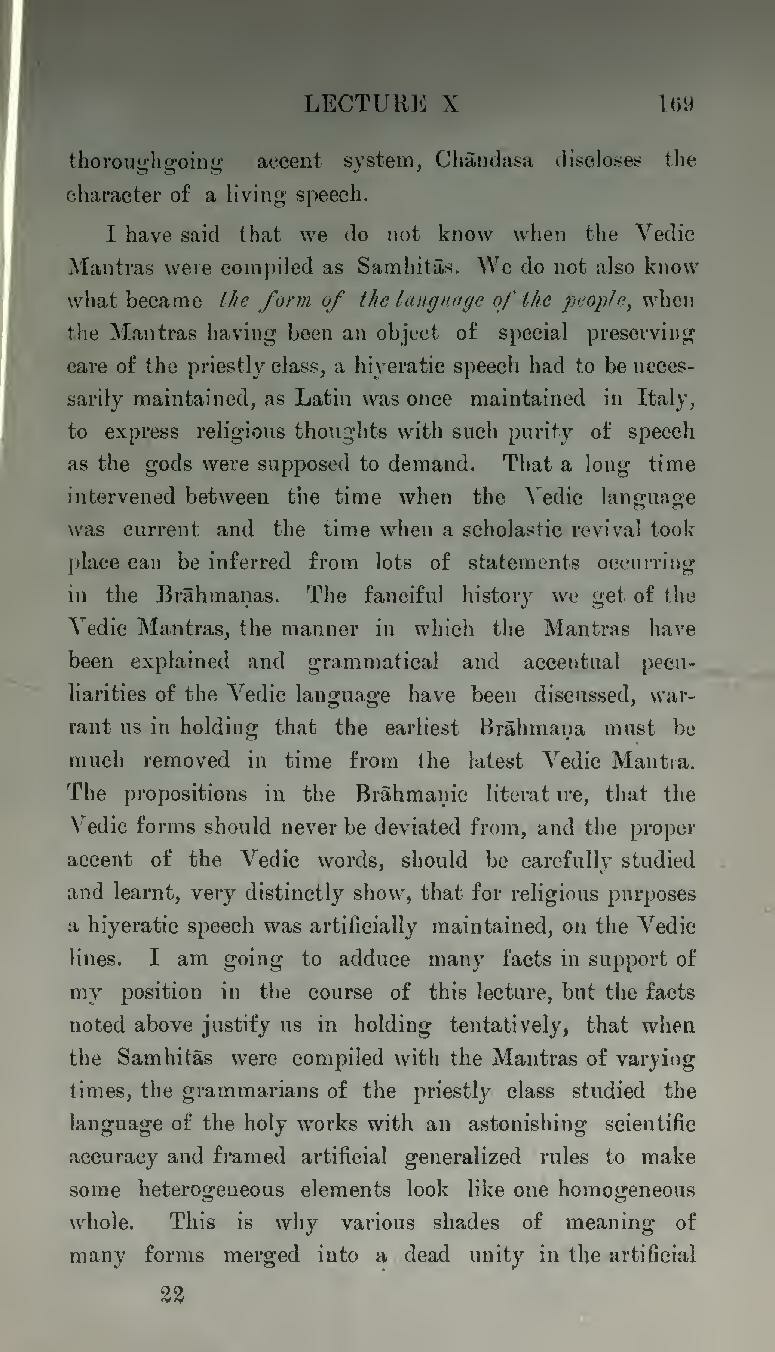thoroughgoing accent system, Chāndasa discloses the character of a living speech.
I have said that we do not know when the Vedic Mantras were compiled as Samhitās. We do not also know what became the form of the language of the people, when the Mantras having been an object of special preserving care of the priestly class, a hiyeratic speech had to be necessarily maintained, as Latin was once maintained in Italy, to express religious thoughts with such purity of speech as the gods were supposed to demand. That a long time intervened between the time when the Vedic language was current and the time when a scholastic revival took place can be inferred from lots of statements occurring in the Brāhmaṇas. The fanciful history we get of the Vedic Mantras, the manner in which the Mantras have been explained and grammatical and accentual peculiarities of the Vedic language have been discussed, warrant us in holding that the earliest Brāhmaṇa must be much removed in time from the latest Vedic Mantra. The propositions in the Brāhmaṇic literature, that the Vedic forms should never be deviated from, and the proper accent of the Vedic words, should be carefully studied and learnt, very distinctly show, that for religious purposes a hiyeratic speech was artificially maintained, on the Vedic lines. I am going to adduce many facts in support of my position in the course of this lecture, but the facts noted above justify us in holding tentatively, that when the Samhitās were compiled with the Mantras of varying times, the grammarians of the priestly class studied the language of the holy works with an astonishing scientific accuracy and framed artificial generalized rules to make some heterogeneous elements look like one homogeneous whole. This is why various shades of meaning of many forms merged into a dead unity in the artificial
